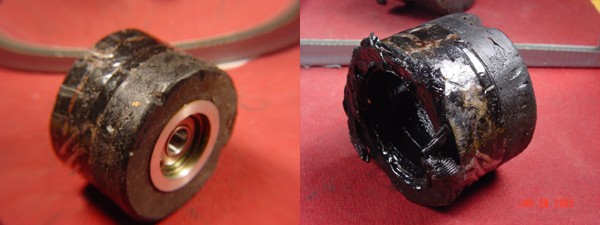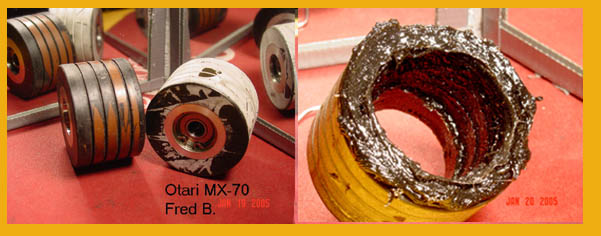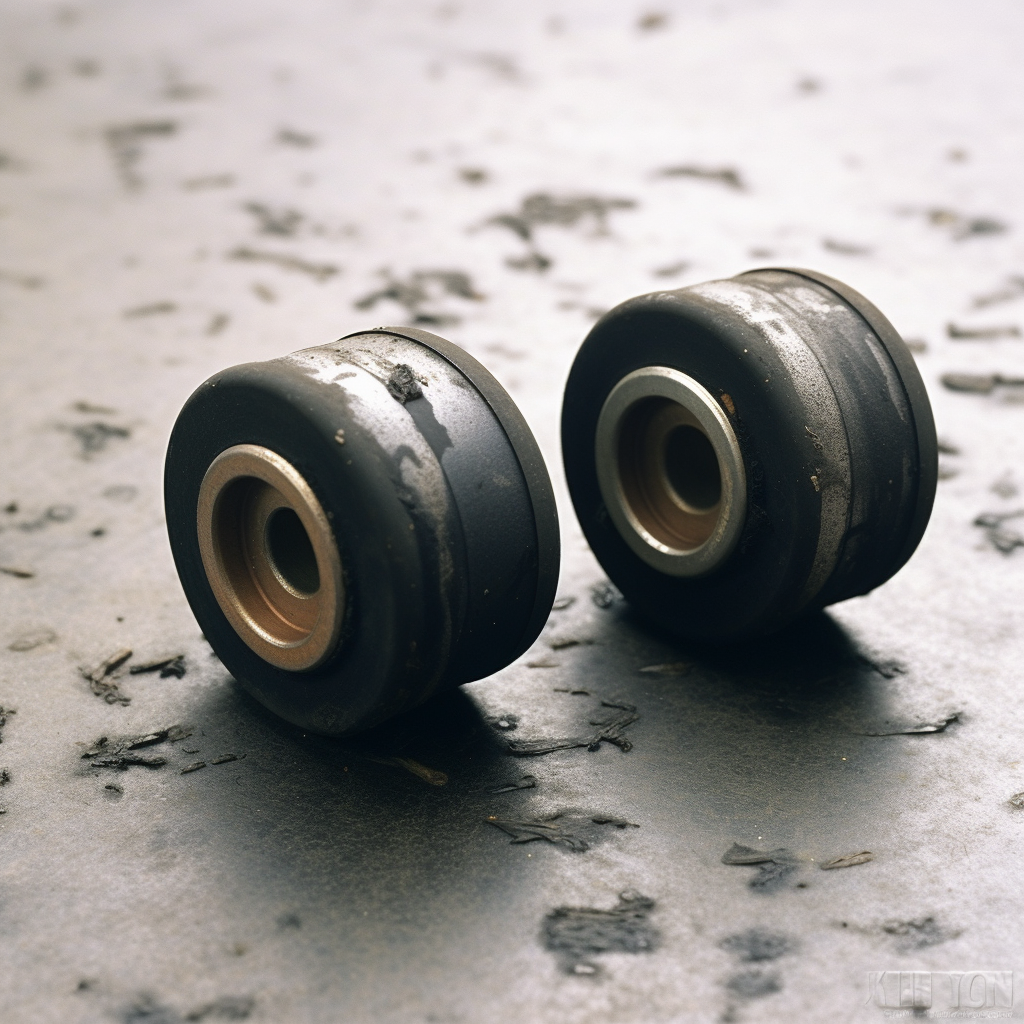- Terry Witt 13610 Krauskopf Sparta Mich, 49345 United States
- t.e.witt@juno.com
Gooey
- Home
- Gooey
In the past I’ve tryed explaining over the phone to my customers just how bad their roller was on the inside. But I don’t think they actually realized just how bad/gooey they are. In the upper picture, the white roller on the left was painted hoping to rid the stickyness. As I started inserting my removal tool, this black, gooey, sticky, almost liquid stuff started dripping off the cutter. The roller on the right is the same roller.
Its no wonder it caused problems and had to be rebuilt. The second lower photo is just another example of the same rubber breakdown.
I get many like this, some worse and some not quite so bad. It isn’t a problem associated to one specific brand or model. Another brand that comes to mind is the Tascam Msr 24. I don’t think they came from the factory with what I call regular rubber, but when its machined, its more like neoprene or urathene.
Never the less, it still gets this same sticky break down problem. Quite often or most of the time they look pretty much normal from the outside, but once its opened up, its obvious why the customer complained that “It just didn’t sound like it used too”. So if your machine has rubber rollers it can be a victim to this breakdown.


Here is a theory that is just my personal, somewhat unsciencetific opinion as to why this happens. Keep in mind these percentages are probably wrong but its just an example. I think when a chemical is used to clean a rubber roller, 99.999% of the chemical either evaporates or gets wiped off. But the problem is, the .001% that gets absorbed into the rubber and perminately stays in the rubber. After years of cleaning, the rubber becomes saturated from continually absorbing that .001% and eventually it gets to a point where it can’t absorb any more. At this point, the chemical content in the rubber becomes unbalanced and thats when it goes “Over the edge” so to speak, and breaks down.
After I remove the gooey roller, it can set around and they still don’t dry out. Thatsemi liquid substance in the middle never does dry out. I’m guessing again, but that.001% must be something different than the other 99.999% as it doesn’t evaporate, ormaybe it just changes the composition or the rubber. Right or wrong just what I’ve observed.
Since writing the above statement, I’ve since had a slight change of thinking. I still believe chemicals will ruin rubber as tests I’ve done here on new rubber. I’ve drastically abused the rubber, doing things that you would never do to your own roller, and the rubber reacts dramatically to chemicals. I’m talking about submerging rubber in a chemical solution for many hours. It takes 12-24 hours and the rubber swells in size about 20% and very spungy and flexable (feels like a gummy bear). After it drys out, a few days later, it returns to somewhat near normal size, and the rubber feels about normal. After that it may not be acceptable for pinch roller use.
I’ve also done tests on good appearing “old orginial” rubber, and chemicals soften the rubber much much quicker than new rubber. I’m talking within an hour or less. Even after drying out, days later, it still stays gooey.
But, I do believe time, humitity and temp may also be affecting rubber over time. At least the rubber made 20, 30, 40 years ago. The reason I say that is orginial belts will turn to goo after many years. And they probably havn’t had any chemicals on them. So there must be some other force (besides chemicals) affecting them.
